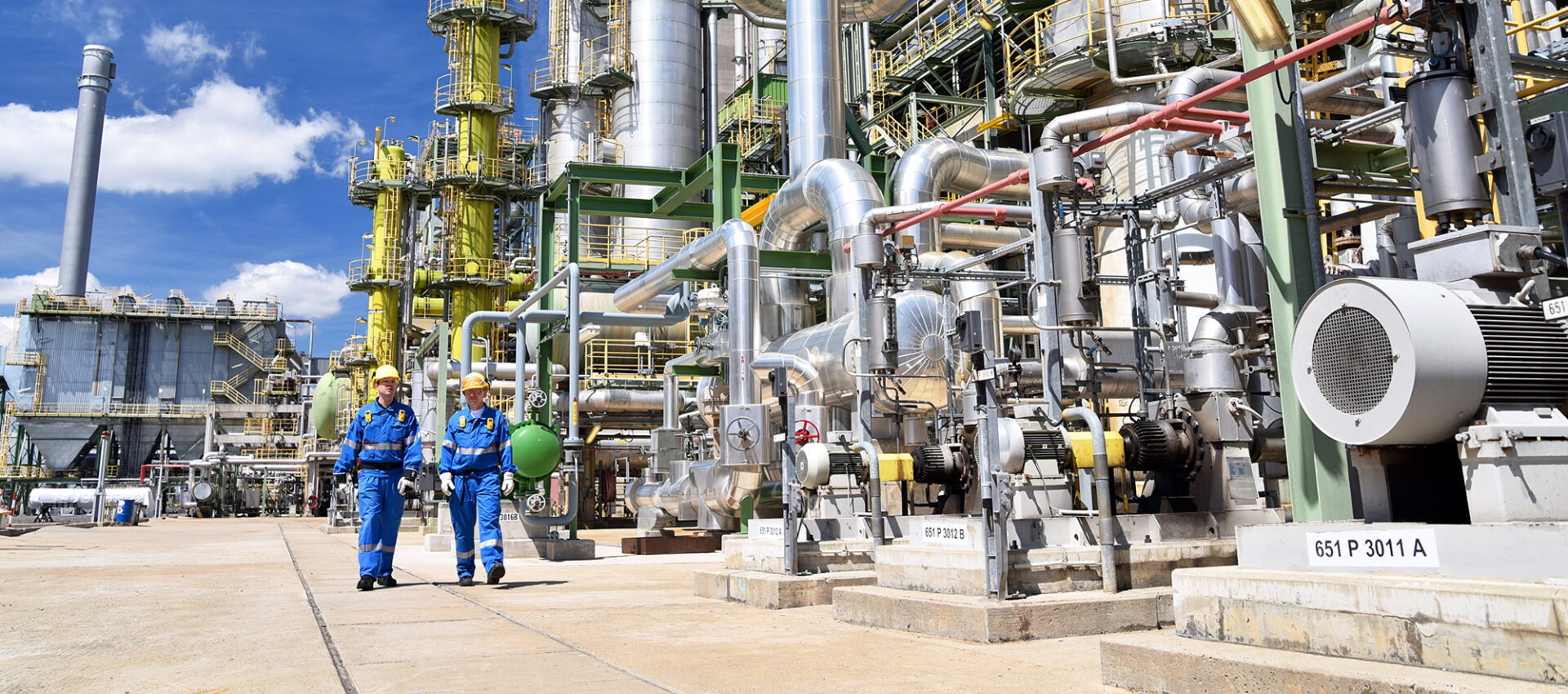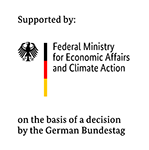Mitigation potentials for emissions of nitrous oxide from chemical industry in industrialised countries worldwide
By Wolfram Jörß, Sylvie Ludig, Lambert Schneider (Öko-Institut), Enrico Rubertus, Emilio Martin, Volker Schmidt (GIZ-NACAG)
A new study on behalf of BMWK investigates mitigation potentials in industrialised countries for emissions of the greenhouse gas nitrous oxide (N2O) from chemical industry, in particular from the production processes for nitric acid, adipic acid and caprolactam.
The study was conducted by Öko-Institut for the Nitric Acid Climate Action Group (NACAG), implemented by the Deutsche Gesellschaft für Internationale Zusammenarbeit (GIZ) on behalf of BMWK. The study is available for download at the following link.
The study report presents 15 country briefs covering the size of the respective industries, current regulatory framework conditions affecting N2O emissions, N2O abatement in place, and estimates of current N2O emissions, emission intensities and mitigation potentials. The covered countries and regions are Australia, Canada, Chile, the European Union, Israel, Japan, the Republic of Korea, Norway, Russia, Saudi-Arabia, Singapore, Trinidad and Tobago, United Arab Emirates, United Kingdom, United States of America but do not include ‘emerging economies’ like China or India. For the purpose of the study, ‘industrialised countries’ are defined as countries not identified by the OECD as eligible for official development assistance (ODA) and thereby not eligible for financial support through NACAG.
Industrial N2O Industrial nitrous oxide emissions are caused by three main sources: the production of nitric acid, adipic acid and caprolactam. All three substances produce nitrous oxide (N2O) through the oxidation of nitrogen compounds during the production process. Nitric acid is an important component of artifcial fertilizers, while adipic acid and caprolactam are important plastic precursors. They are used as polyamides in the form of synthetic fbers in the textile, medical and machinery industries.

In total, 2020 process emissions of N2O from chemical industry in industrialised countries worldwide are estimated at 47.4 Mt CO2e in total (GWP AR5), thereof 76 % (36.1 Mt CO2e) from nitric acid production, 17 % (8.0 Mt CO2e) from adipic acid production and 7 % (3.3 Mt CO2e) from caprolactam production. The investigated countries and regions contributing most to N2O emissions are Russia, the USA, the EU, Australia and Trinidad and Tobago for nitric acid production, the USA for adipic acid production, and the EU, the USA and Russia for caprolactam production.
Climate policies affecting N2O emissions from chemical industry for the key contributors are missing in particular for Russia, the USA and Trinidad and Tobago. The European Union, while covering N2O from nitric and adipic acid production under the EU-ETS, employs no policies effectively addressing N2O emissions from caprolactam production.

For nitric acid production, average emission intensities per country range from very high 9 kg N2O/t HNO3 (Trinidad and Tobago, Russia) to low 0.5 kg/t and less for Western European countries and Korea. While a comparison of national average emission intensities provides a benchmark-based top-down indication of N2O mitigation potentials for ambitious climate policies, ‘low-hanging fruit’ mitigation potentials in presently unabated nitric acid plants were additionally estimated: These sum up to 63 % of total N2O emissions from nitric acid production estimated for 2020 (22.5 Mt CO2e mitigation potential out of 36.1 Mt CO2e 2020 emissions). Such mitigation potentials are primarily allocated to Russia, the USA and Trinidad & Tobago. Single further nitric acid plants without abatement were identified for Australia and Japan. For Australia, however, a retrofit is reported to be underway.
Adipic acid production is taking place in only six of the industrialised countries studied, i.e. the USA, Japan, Korea and the EU Member States France, Germany and Italy. Emission intensities range from very high 40 kg N2O/t adipic acid (USA) to as low as 2-4 kg/t and below for the EU and Korea. While ambitious mitigation is taking place in Japan, Korea and the EU, the mitigation efforts in the USA are insufficient, as available mitigation equipment appears to be operated poorly.
Caprolactam production is taking place in 10 of the industrialised countries studied, i.e. the USA, Russia, Japan, Korea and the six EU Member States Belgium, Czechia, Germany, France, Germany, Netherlands, Poland and Spain. Emission intensities range from very high 9 kg N2O/ t caprolactam (USA and Russia) to as low as 2 kg/t for Japan and Korea. Even lower emission rates were reported for EU Member States Poland (0.6 kg N2O/t) and Germany (nearly complete elimination). While ambitious mitigation is taking place in Japan, Korea and some EU Member States, the mitigation efforts are insufficient in the USA, Russia and other EU countries. Unlike nitric acid and adipic acid production, N2ON2ON2O emissions from caprolactam production are not covered by the EU-ETS.
This text was first published in CMR 1-2023.



